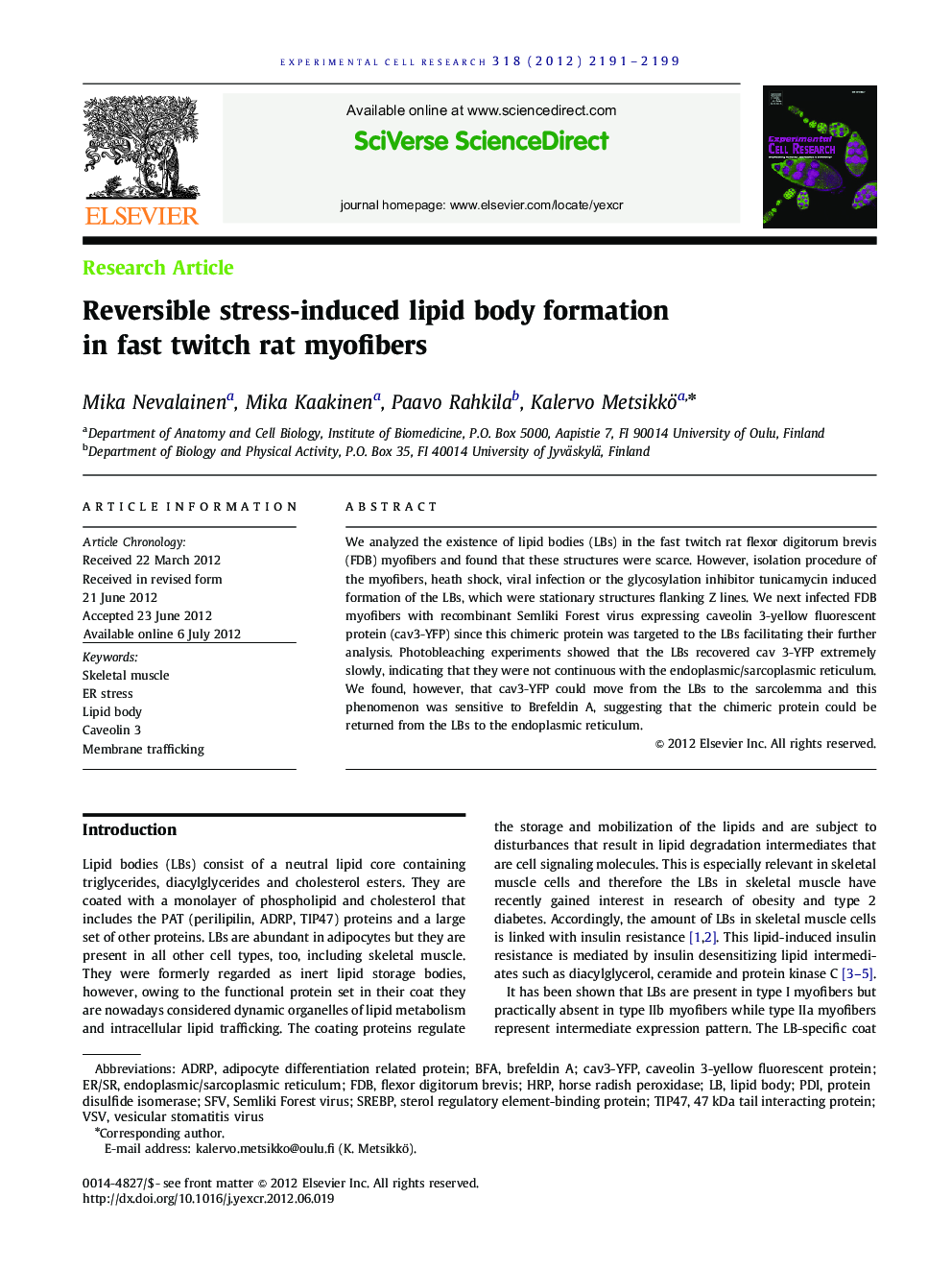| Article ID | Journal | Published Year | Pages | File Type |
|---|---|---|---|---|
| 2130482 | Experimental Cell Research | 2012 | 9 Pages |
We analyzed the existence of lipid bodies (LBs) in the fast twitch rat flexor digitorum brevis (FDB) myofibers and found that these structures were scarce. However, isolation procedure of the myofibers, heath shock, viral infection or the glycosylation inhibitor tunicamycin induced formation of the LBs, which were stationary structures flanking Z lines. We next infected FDB myofibers with recombinant Semliki Forest virus expressing caveolin 3-yellow fluorescent protein (cav3-YFP) since this chimeric protein was targeted to the LBs facilitating their further analysis. Photobleaching experiments showed that the LBs recovered cav 3-YFP extremely slowly, indicating that they were not continuous with the endoplasmic/sarcoplasmic reticulum. We found, however, that cav3-YFP could move from the LBs to the sarcolemma and this phenomenon was sensitive to Brefeldin A, suggesting that the chimeric protein could be returned from the LBs to the endoplasmic reticulum.
► ER stress was found to cause formation of lipid bodies in isolated myofibers. ► The lipid bodies were immobile structures with virtually no connection to the ER. ► Caveolin 3-YFP was initially routed to lipid bodies but could return back to the ER.
